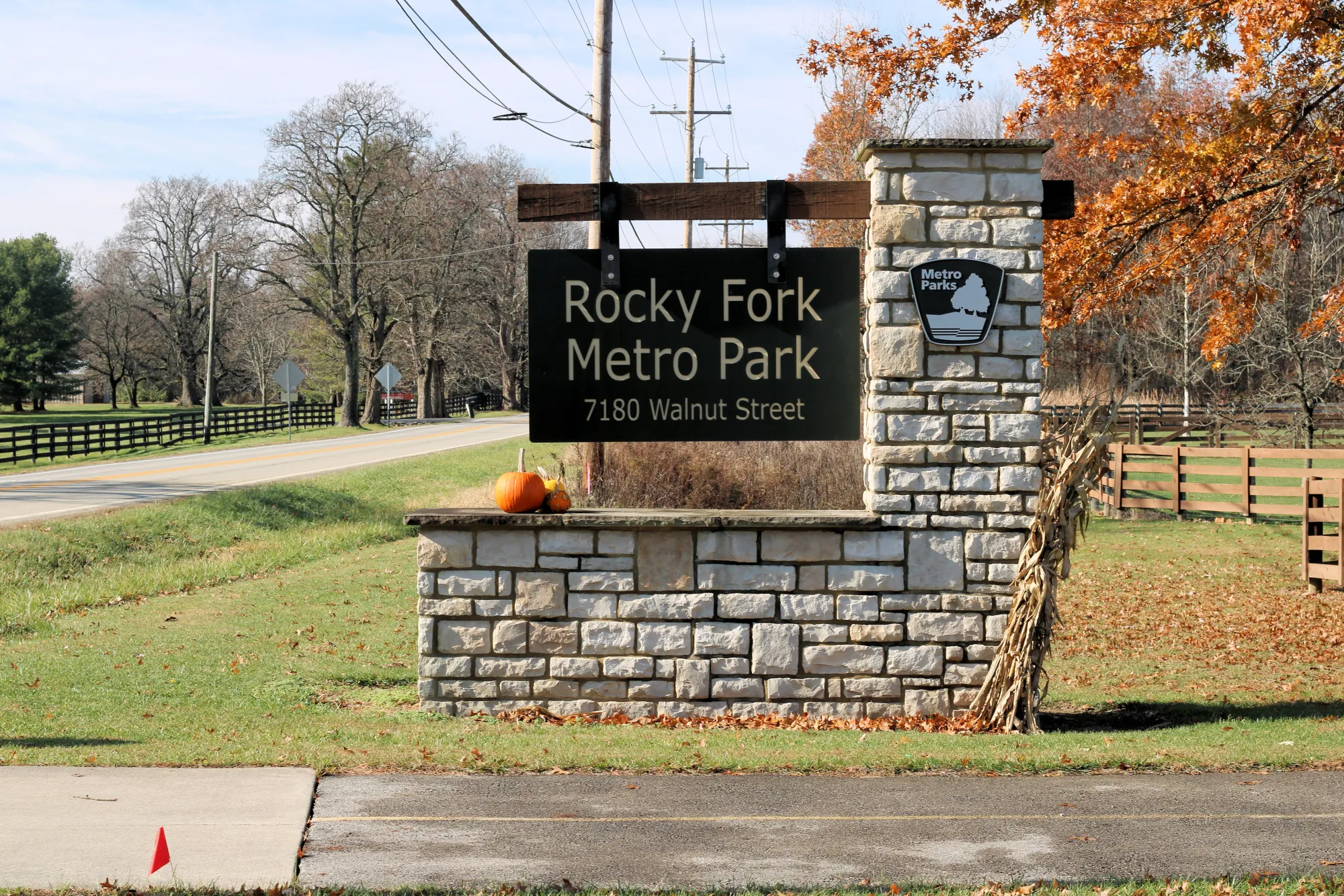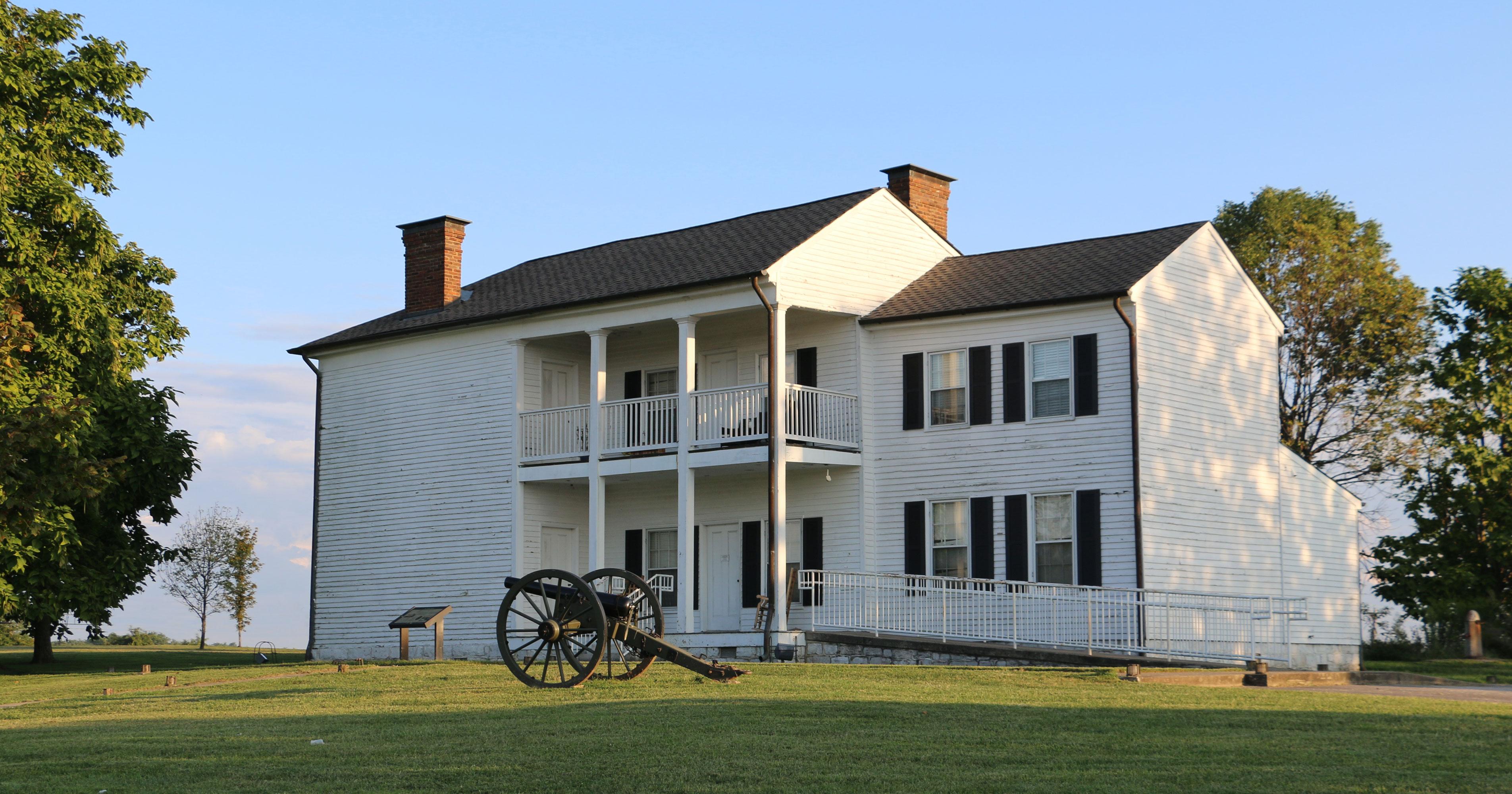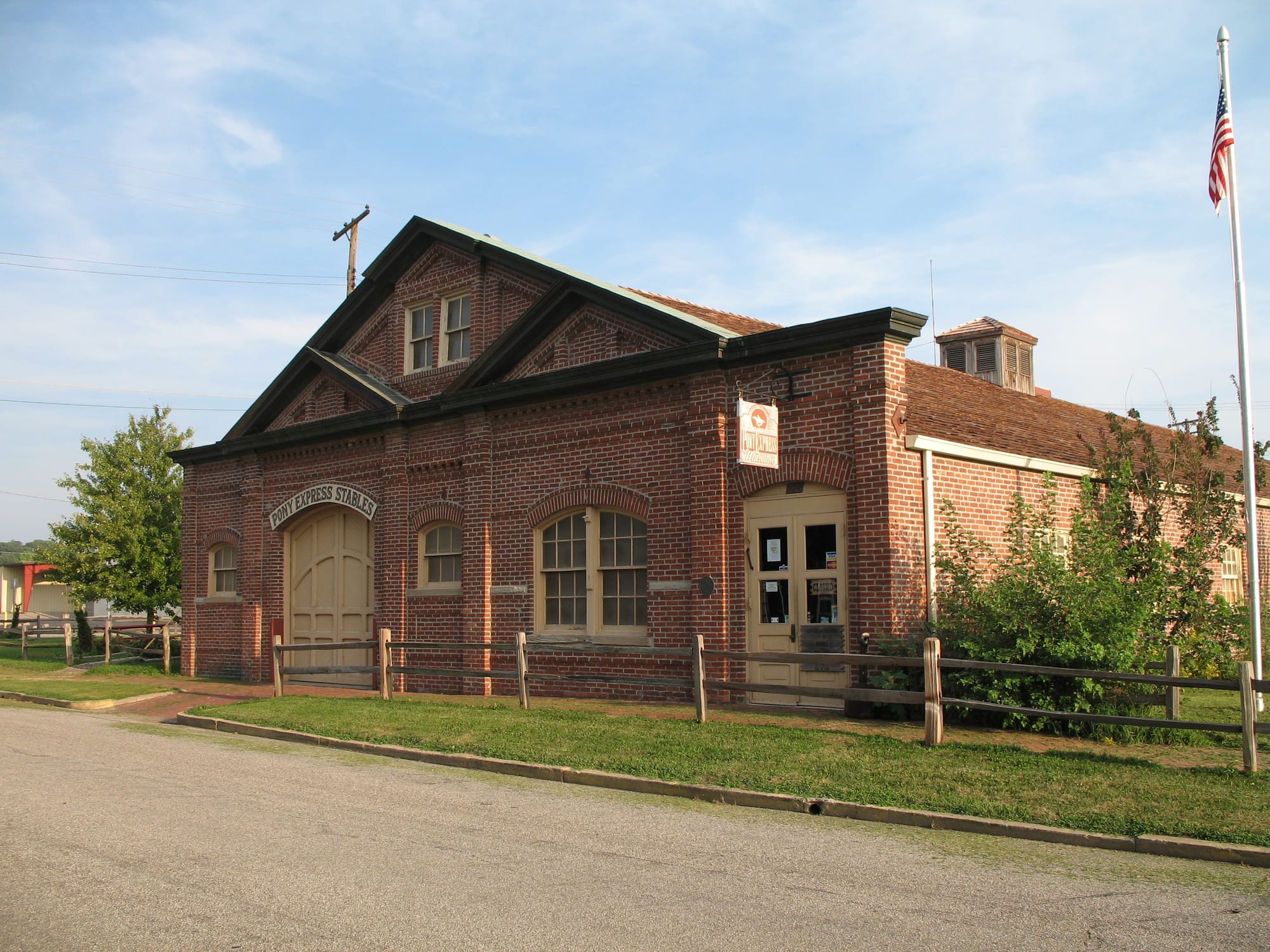
St. Joseph Missouri
Trail Map
Click the map to enable zoom.
Elevation Profile
Elevation data not available for this trail.
St. Joseph, Missouri offers some interesting hiking and historical opportunities. As you can already see, this is not an Ohio hiking blog entry. It is more of an informative blog. Here’s a brief overview of the city and interesting aspects:
History of St. Joseph, Missouri
Founding and Early History:
- Founded: St. Joseph was officially incorporated in 1843.
- Slavery: Slavery was indeed present in St. Joseph, Missouri, as it was in many parts of the American South and border states during the 19th century. Missouri was a slave state before the Civil War, and St. Joseph, being a significant town and commercial center, had enslaved people working in various capacities, including in households and on farms.
- The Missouri Compromise of 1820 had established the Missouri River as the dividing line between free and slave territories, but Missouri itself was a slave state. The presence of slavery in St. Joseph reflected broader regional practices and tensions leading up to the Civil War.
- Civil War: St. Joseph was a strategic location during the Civil War due to its location on key transportation routes.
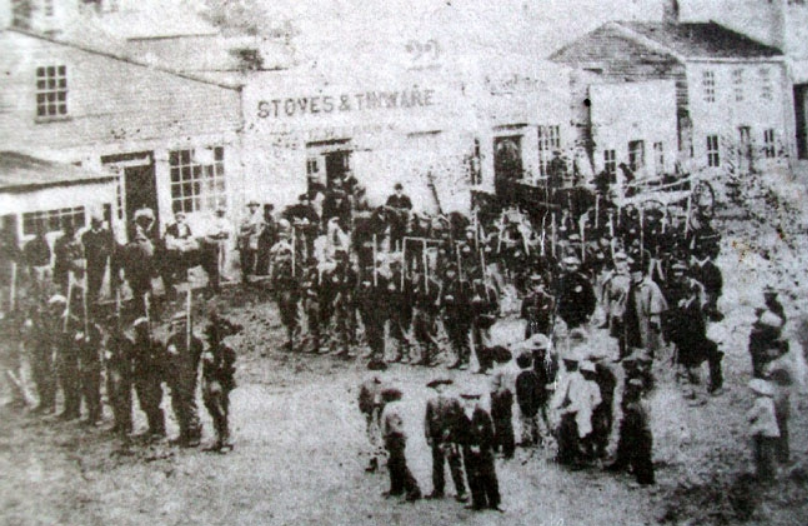
- Growth: The city continued to grow throughout the late 19th and early 20th centuries, becoming a significant regional center for trade and commerce.
- Key Role: It played a crucial role during the westward expansion of the United States, primarily due to its position as a major starting point for the Pony Express and the Oregon Trail.
Pony Express:
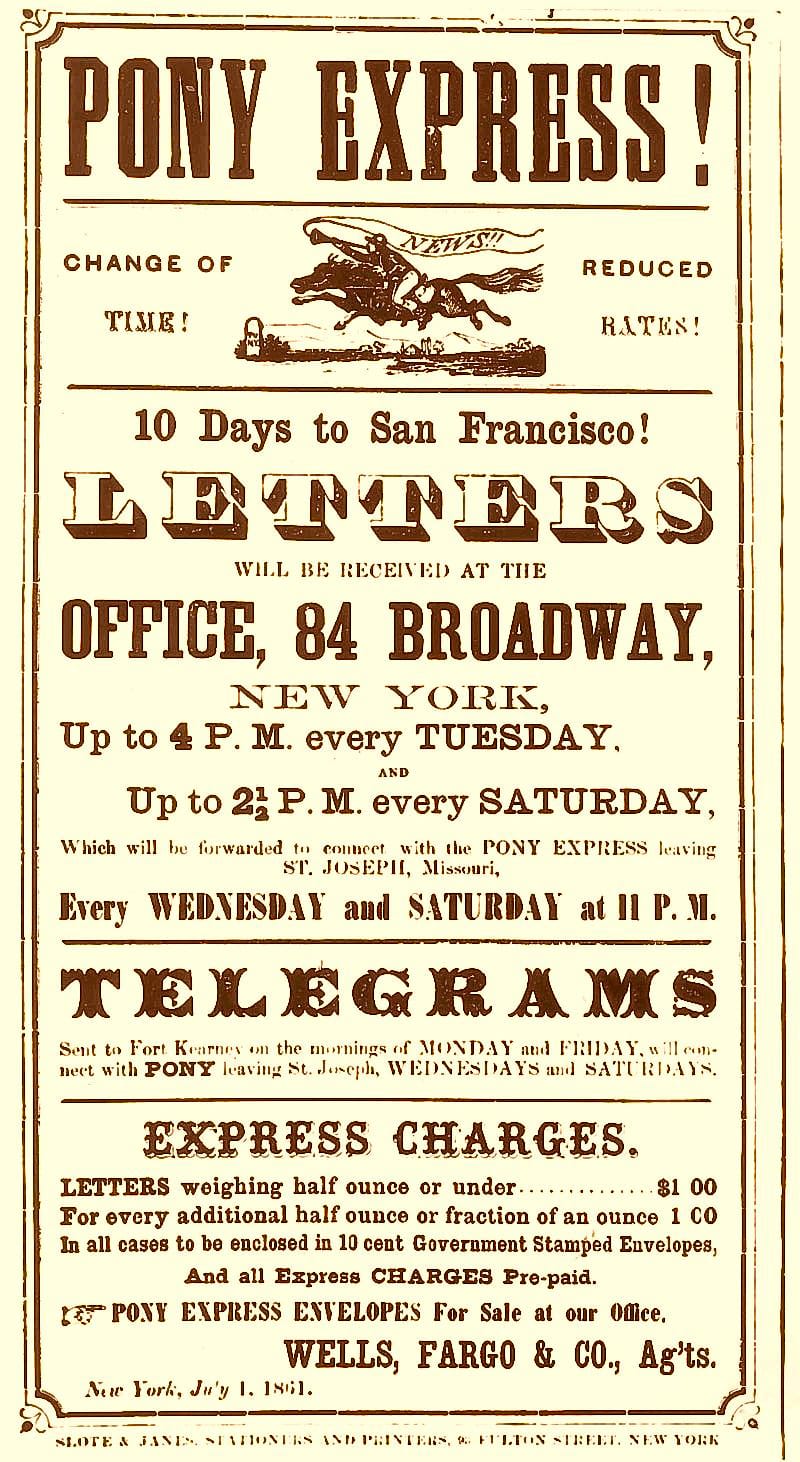
- Establishment: The Pony Express was a mail service that operated from April 1860 to October 1861, providing a fast mail delivery service across the United States from St. Joseph, Missouri, to Sacramento, California.
- Purpose: It was a mail service established to provide fast, reliable communication between the eastern United States and the western territories. It was particularly significant before the completion of the transcontinental telegraph.
- Establishment: The service began in April 1860 and ran until October 1861, when the transcontinental telegraph rendered it obsolete.
- Operation: Riders traveled roughly 1,900 miles across the country in about 10 days, a remarkable feat at the time. The Pony Express recruitment poster from 1860 is quite famous for its bold and direct appeal. It sought “young, skinny, wiry fellows” who were willing to risk their lives to deliver mail across the United States. Riders had to be under 125 pounds and were expected to cover the 1,966 miles.
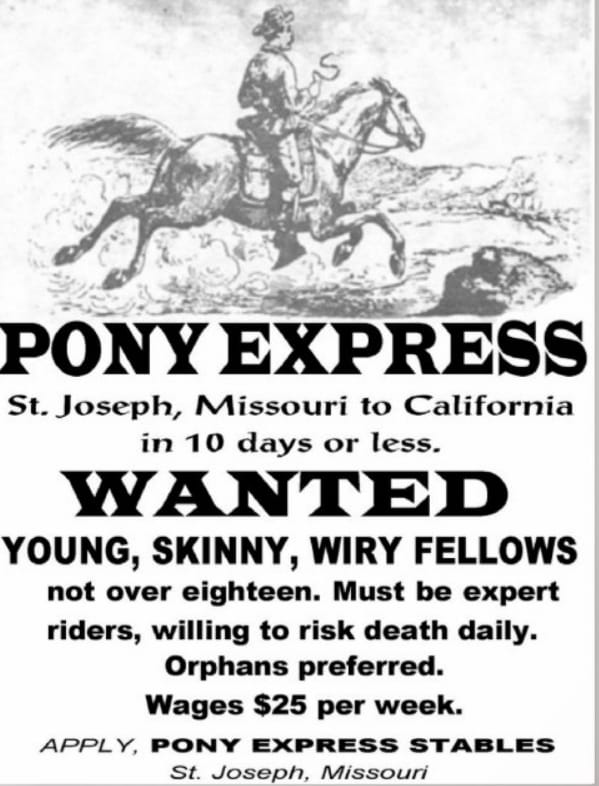
- Significance: Although it only operated for about 18 months before being superseded by the transcontinental telegraph, it remains an iconic symbol of American pioneer spirit.
October 24, 1861
The inaugural message of the transcontinental telegraph was transmitted on October 24, 1861, by Chief Justice Stephen J. Field from San Francisco to President Abraham Lincoln in Washington D.C., rendering the Pony Express obsolete. Samuel F. B. Morse dispatched the first telegraphic message in the United States on May 24, 1844, from Washington, D.C., to Baltimore, with the words "What hath God wrought!" The establishment of the first transcontinental telegraph system by the Western Union Telegraph Company in 1861 connected the telegraph networks of the East and West. Here are some of the notable riders:
- Buffalo Bill Cody - William F. Cody, better known as Buffalo Bill, rode for the Pony Express early in his career.
- Jack Keetley - A young rider known for his bravery and endurance.
- James "Jim" Moore - Another prominent rider who made a significant impact.
- Robert Haslam - Also known as "Pony Bob," he was known for his remarkable rides, including some very long and dangerous ones.
- William "Billy" Dixon - A rider who later became famous as a scout and buffalo hunter.
- Johnny Fry - One of the first riders, he was known for his significant role in the early days of the service.
- John "Jack" Slade - Known for his colorful and rugged life, Slade rode for the Pony Express before becoming a famous lawman.
The Pony Express had around 120 riders in total, many of whom were young men in their teens or early twenties. The service was an important part of American history, symbolizing the spirit of adventure and the expansion of the American frontier.
Hiking Trails in St. Joseph, Missouri
1. Krug Park:
- Features: This park offers a variety of trails suitable for hiking, along with beautiful landscapes, including a pond and scenic overlooks.
- Highlights: The trails are relatively easy, making them suitable for casual hikes and family outings.
- Trail Length: Several short trails; the total length is around 3 miles.
2. Walnut Creek Trail:
- Features: This trail is part of the larger trail system that offers a mix of natural scenery and wildlife viewing opportunities.
- Difficulty: Generally easy to moderate, providing a pleasant hiking experience for all skill levels.
3. Pony Express Trail:
- Historical Significance: Parts of this trail follow the historic Pony Express route, offering both historical insight and outdoor recreation.
- Experience: Hikers can enjoy a mix of historical markers and scenic views as they traverse portions of the old Pony Express route.
4. Buchanan County Trails:
- Features: In the broader Buchanan County area, there are additional trails and natural areas to explore, offering varied terrain and experiences.
- Trail Length: Varies; several short loops and connecting trails.
- Riverside Park:
- This park features several trails along the Missouri River, offering scenic views and a good mix of paved and unpaved paths.
- Trail Length: Varies; several short loops and connecting trails.
- Corby Pond Trails:
- Located in Corby Pond Park, these trails offer a peaceful setting for walking and light hiking around the pond.
- Trail Length: Approximately 1.5 miles of trail around the pond.
- Wyeth-Tootle Mansion Gardens:
- While not a trail in the traditional sense, the gardens here offer lovely walking paths through well-maintained gardens and historical grounds.
- Trail Length: Varies; several walking paths within the gardens.
- St. Joseph's Levee Trail:
- This trail runs along the Missouri River levee, providing excellent views of the river and cityscape.
- Trail Length: Approximately 2 miles.
For maps and detailed information, you might want to visit the St. Joseph Parks and Recreation Department website or contact local outdoor and recreational stores. They often have trail maps and additional details about trail conditions and length.
Personal Experience
We recently visited friends in St. Joseph. During our visit we had the opportunity to go to the Pony Express Museum. It was very informative and enjoyable.
We didn't get a chance to hike any of the trails due to limited time, however we were able to go see the Missouri River.

Conclusion:
St. Joseph, Missouri, is a very interesting city. Even though this is not an Ohio hiking trip, I thought it would be a great addition to the blog.
If you have any questions, or information to add, please contact us.
